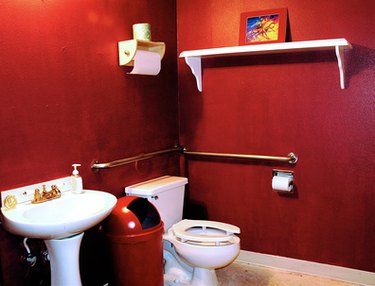
Sewer gas is made up of several chemicals and gases. The main ingredient is hydrogen sulfide, which is the gas that gives sewer gas its characteristic smell. Other components of sewer gas include ammonia, methane, carbon dioxide, sulfur dioxide, nitrous oxide, bacteria and viruses. Sewer gas can include elements such as bleach, pharmaceuticals or gasoline if those chemicals have been added by the user by flushing, pouring down the sink or from washing machine drainage.
Odor
Video of the Day
Sewage and septic gas has a definite and readily identifiable odor. Clogs in the system, cracks in pipes or vents or dry traps in plumbing fixtures can allow the gas to escape from the system into the home. The odors can then be transported throughout the home or building by the heating and cooling system, making locating the source of the problem sometimes difficult to uncover.
Video of the Day
Illness
Sewer gas exposure can cause many symptoms, including headaches, nausea, eye irritation, respiratory distress and dizziness. Prolonged exposure to the gas can cause confusion and fatigue, and can potentially lead to hydrogen sulfide poisoning or depleted oxygen levels. Airborne pathogens present in the gas can also cause illnesses. Possible pathogens include bacteria, viruses and parasites. Strong concentrations of sewer gas can overcome an individual quickly and lead to coma or death.
Visible Plumbing Damage or Problems
Noticeable clogs or cracks in pipes or plumbing fixtures indicate a potential for sewer gas backdraft. Clogged and cracked plumbing pipes prevent the septic system from operating efficiently and allow gas to escape from drains. Clogs and cracks are often visible or cause noticeable symptoms such as sewage back up or slow moving drains. Dry plumbing fixture traps can also lead to sewer gas exposure. The water present in the plumbing traps of sinks, bathtubs and toilets prevents sewer gas from escaping through the drain. Flush a rarely used toilet at least once a week, or when the water level in the bowl appears low to prevent drying out the fixture.